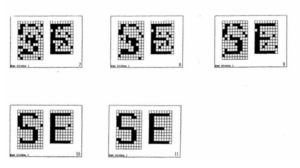
Image: iStock photo
Why do schools of fish and other animals move as they do? What makes these animals suddenly and collectively change behavior and move in concert with one another without a unifying brain directing their motion?
This is what Eva Kanso, professor and the Z.H. Kaprielian Fellow in Aerospace and Mechanical Engineering at the University of Southern California tries to understand. Kanso and her Bioinspired Motion Lab studies the flow and physics of living systems. In a new paper in PNAS, she and USC PhD students look at social behavior within schools of fish when they are in a confined space, finding that there are new behaviors that emerge.
The hope?
If we understand how coordination emerges in groups of seemingly unconnected individuals like fish, that one day we might understand self-organization in nature, from cell organization during embryogenesis to humans, Kanso says.
Her work, in an emerging area of research called “active matter physics,” is to study these animals mechanistically, she says. Specifically, her team looked at the perception-action cycle in an individual fish, and how this individual-level response leads to collective dynamics.
“We want to understand the mechanics of how collective group motion is governed by your perception of the neighbors around you.” She is interested in “what kind of behaviors emerge when you don’t have any [obvious] leader in a group?”
While other groups have studied this topic. Her group, she believes, is one of the first to ask—”how does the physical environment, such as the fluid medium or the geometry and topology of the actual domain, affect the emergent behavior of the group.”
To study this, she uses what she calls a “virtual fish tank.” It’s a customized computational model of “mathematical fish,” based on real-world observations of fish, in a confined environment with boundaries.
And these boundaries change the behavior of the fish. According to their paper “Collective phase transitions in confined fish schools, “…geometric confinement triggers surprising changes in collective patterns of the group.”
“It is known that groups of fish with no confinement and no leader can reach one of four collective phases,” Kanso says, “schooling, where swimmers form a denser group with all individuals moving in the same direction; milling, with swimmers forming a ‘vortex’ and going in circles; turning: where swimmers align together to perform a turn along a large-scale curved trajectory; and swarming, where swimmers form a sparse group with no preferential direction.”
The study finds that there are different states that emerge when groups of fish interact with domain boundaries:
They found, for example, a double-milling state, where the group of fish organizes in two subgroups, with one going in one direction the other goes in the opposite direction. “It is like creating mixed lanes with traffic going in both directions,” says Kanso.
Perhaps, adds Kanso, the double-milling state allows for better mixing of oxygen and might kick up the transport of nutrients and waste, particularly in a confined space like a fish farm.
Importantly, they found that the group of fish spontaneously transitions between two states: milling and schooling. “This is most interesting!” says Kanso with excitement.
“Without changing any parameters in the model, that is, for the same perception-action cycle at the individual level, the group goes into a milling state, then all of sudden, transitions to schooling, and back to milling; This back-and-forth transition between the two collective states happens less frequently as the size of the group increases.”
The research team’s theory is that these rich behaviors might have an evolutionary advantage. Fish might benefit from switching between milling – which keeps them in one spot and thus less visible to a predator — and schooling — which allows them to explore more, thus helping the group with foraging and surveillance without extra effort or changes to the individual response.
Kanso’s team is working with biology researchers on using this novel mathematical model to understand collective behaviors in natural schools of fish. “Beyond fish, our mathematical framework for connecting the individual and collective behaviors could be applied broadly to other animal groups on the move,” Kanso says. The team wants to share their model with interested researchers.
Besides understanding animals, Kanso hints that if we can look at the individual to the collective behavior and understand how actions change on a cellular level, we could perhaps know how to change the behavior of a group of cells.
Now imagine targeting a cancer cell with that knowledge—that one cell could positively change the behaviors and outcome of the others.
Published on October 30th, 2024
Last updated on January 20th, 2025











